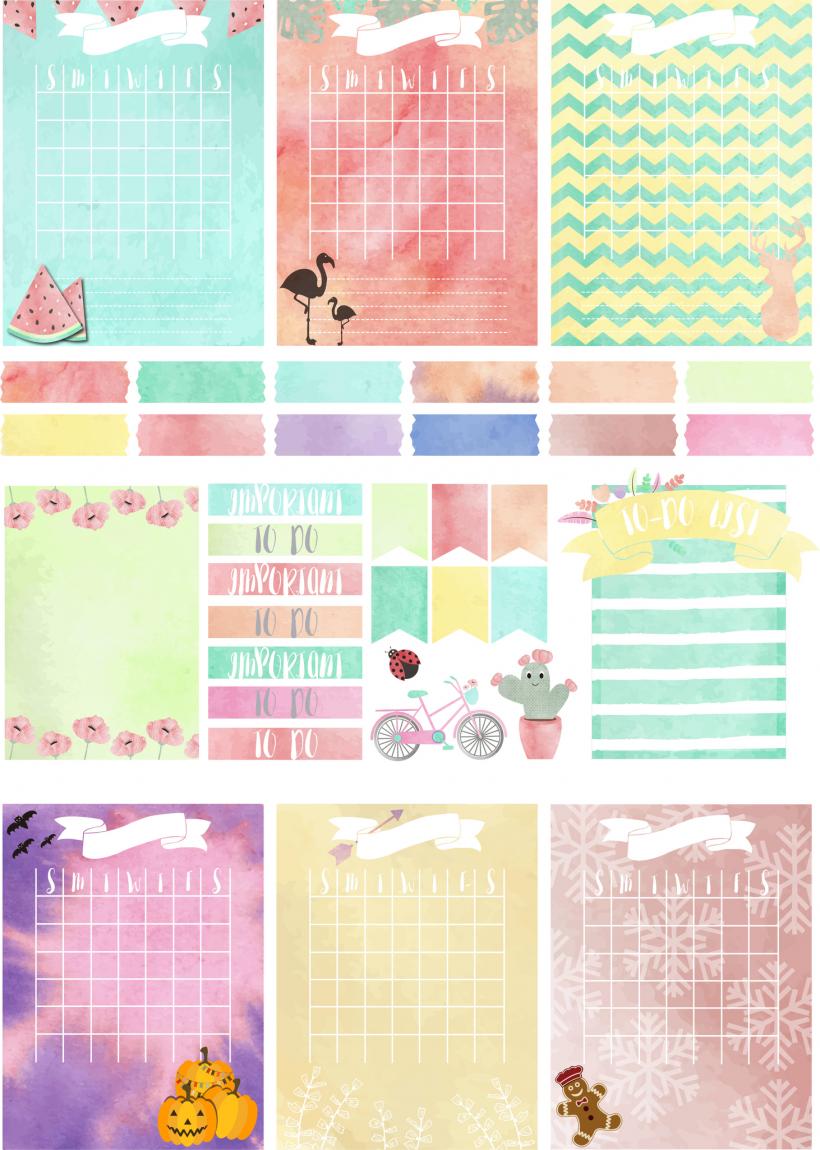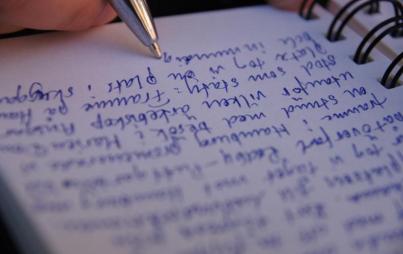
Bullet journaling all about what works for you. It shouldn’t feel burdensome.
Bullet journaling is trendy right now! All my faves (and all the cool kids) are sharing their spreads on Instagram and tweeting about their #bujogoals. This technique is appealing to everyone for different reasons from its efficiency and structure to its flexibility and individuality. It allows people the opportunity to be incredibly minimalist or over the top creative.
Bullet journaling is all about what works for you. It shouldn’t feel burdensome.
You can Google a lot about bullet journaling so I won’t bore you with the details about how to set up your journal, and I won’t overwhelm you with all the ways you can great creative with your monthly, weekly, and daily spreads. Thankfully, Buzzfeed’s got that covered!
As a writer, often my ideas are barreling out of my mind faster than my fingers can keep up. And since I already carry a notebook practically everywhere I go, I decided to give bullet journaling a try! So, I committed to using my bullet journal every day for a month, and I've chronicled here what happened.
At first, I prioritized daily rapid logging. But after only a few weeks, I now use my journal for all sorts of activities that fall into three categories: tracking, organizing, and reflecting. If I’m being honest, I’m totally obsessed with my bullet journal now!
Tracking
I use my bullet journal to track things like writing ideas, self-care habits, and tasks I need to complete. Undeniably, my favorite page of my bullet journal is my “Lists List."
Sometimes my ideas bounce around my head, but I don’t have the time or energy to work through them at that exact moment. My “Lists List” is my way of tracking all the ideas for things I want to include in my bullet journal or think through at some point. Some of my ideas for lists “migrate” to other pages when I expand on them.
For example, a list idea called “My Recipe for Success” later found its way to my “Writing Ideas” list, and was ultimately crafted into an article on my blog. I track my writing ideas using a system of symbols I developed to indicate whether an idea was pitched, in progress, submitted, or published, as well as the site it’s featured on.
There are some common keys and symbols bullet journalers use, but the flexibility of bullet journaling allowed me to devise a system that was intuitive for me. I also use my bullet journal to help me track exercise, sleep, and meal plans in advance of big races, or just to have a better general understanding of my own habits.
For example, it was interesting to graph the hours of sleep I get each night (hey — I’m a researcher), and I was motivated to meet my self-care goals by checking off the boxes on my weekly checklist. To give you some context, I’m also that adult who’s still incentivized by sticker charts! This tracking method helped me clearly and quickly see where I can improve and where I’m consistently meeting my goals.
Organizing
Staying organized is important to me. I use my bullet journal to create packing lists and timelines for projects and goals. I love the index feature because I can quickly refer to these essential pages when I need them.
My bullet journal also helps me stay organized through my exploration of potential PhD programs. For example, I started as a simple list of schools I want to apply to, and that list developed into several pages which include timelines, tasks, contact lists, questions for informational interviews, attempts at articulating my research interests, and some inspirational quotes to keep me motivated.
The skeleton features of a bullet journal (e.g., future log, monthly spread, weekly spread) also help me stay organized. I can mark important dates and plan accordingly for upcoming deadlines or events.
Reflecting
Perhaps the best features of my bullet journal is its impact on my mindfulness practice. My bullet journal helps me practice being grounded and thoughtful each day. By using the rapid logging technique, I identify the important bits of my day and give them permanence.
The best part about this type of reflecting is that the entries don’t need to be long — usually they’re better when they are not. For example, I could write “biked to work” and immediately follow it with “I’m mad because my friend canceled our dinner plans."
Each “bullet” weighs the same amount of the page. If I want to expand on something later, I can choose to do a “free write” (i.e., more traditional journaling) on a separate page, but initially this practice allows me to give attention to my experiences without feeling the burden of addressing or expanding on anything before I’m not ready.
Another way I use my bullet journal to reflect is by creating an "end of the month" page. I dedicate space and time at the end of the month to articulate things that worked, things that didn’t work, things I want to change, and things that I am proud of. This practice essentially allows me to take a quick temperature check and see how things are going. Often, the things that I want to change translate nicely into either my notes, big ideas, or plans for the next month.
The trick to successful bullet journaling, in my mind, is to avoid getting caught up in the fanciness of it! Of course, you can make your bullet journal as complex or minimalist as you want, but I’d recommend starting slow. Allow your bullet journaling practice to morph to your needs.
For example, I love the look of the “mood mandalas” I see on Pinterest and Instagram, but I know that tracking my mood using colors and categories doesn’t resonate with me. Focusing on simplicity and practicality helped me get the hang of bullet journaling. For example, I use one color pen for headers and one for content. Maybe one day I’ll expand my color selection and “fancify” my bullet journal, but for now this works for me! (It’s worth noting that what works for me may not work for other people, and that’s the beauty of it. Regardless, now I’m hooked and I have a place to entertain all my thoughts.)
I’m looking forward to some new lists and features for the upcoming months. Some ideas I have: “20 Facts About Me," a daily directive/intention, and tracking one unexpected thing that happened each day.
What strategies work for you? What excites you about bullet journaling? What ideas are you looking forward to trying? Share with Ravishly on Facebook, Twitter, Instagram, or Pinterest, and let's get bullet journaling together!







